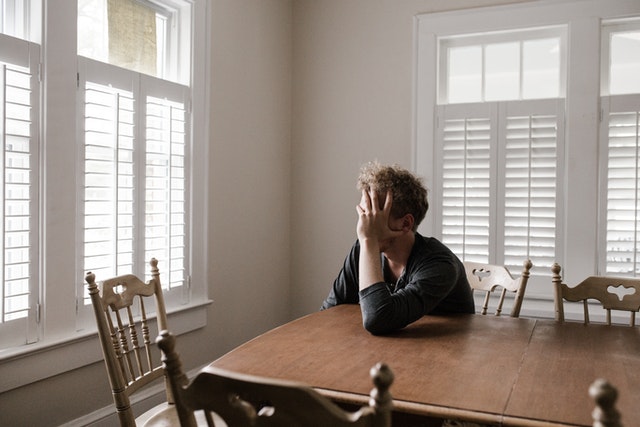According to a survey from the National Alliance for Caregiving and AARP, there are more than 43 million caregivers in America who are unpaid. The majority of caregivers provide care for one adult, but some are caring for two or more adults.
These numbers are expected to continue growing because of the demographics of the country and changing preferences and needs of older people and their families.
Whether someone is an unpaid or paid family caregiver, there’s tremendous stress that comes with this job. As a society, we’re going to have to learn how to best deal with the mental health needs of caregivers and ensure that they are visible.
The following are things to know about caregiver mental health and also depression, which is a relatively common occurrence.
Understanding Mental Health
Our mental health includes all the elements of our emotional and psychological as well as social well-being. Mental health impacts how we feel, think and act, as well as how we deal with stress, relate to others, and make healthy decisions in our lives.
Poor mental health isn’t the same as having a mental illness. You can have poor mental health and not a diagnosable mental health condition. On the other hand, someone who has a diagnosable mental health condition can also have periods of social, mental, and physical well-being.
Your mental health is just as critical as physical health.
They’re often related in different ways. For example, someone with depression is at a greater risk of many types of health problems like heart disease, stroke, and diabetes.
Everyone’s mental health has the potential to change over time, depending on their current circumstances and different factors.
If you’re a caregiver, you may find the demands being placed on you are beyond your coping abilities and resources. This can affect your mental health. You might, at the same time, be experiencing other issues that contribute to poor mental health, such as financial strain or problems in family relationships.
When you have positive mental health, you’re able to realize your full potential and deal with the stress in life using healthy coping mechanisms. You can be productive at work and contribute to your community and the world around you.
Caregiver Mental Health
According to the Anxiety & Depression Association of America, anywhere from 40-70% of caregivers show signs of depression. Anywhere from ¼ to ½ of these caregivers meet the criteria for major diagnosable depression. Some describe caregiver depression as a silent health crisis. If 20% of caregivers suffer from depression, that’s twice the rate seen in the general population.
It’s not necessarily the case that caregiving is causing depression. It’s also not a certainty that everyone who acts as a family caregiver will experience depression. What can happen is that when people take on the role of caregiving, they might sacrifice their own needs, physically and emotionally. There are also experiences that can strain even otherwise mentally healthy people. This can lead to feelings of anxiety, anger, frustration, isolation, and exhaustion.
Some of the concerns surrounding mental health specific to caregivers include:
- When you’re providing care for another person, it can be all-consuming and feel like it’s taking over your life. This can be especially true if you’re managing care for someone with Alzheimer’s, dementia or a similar cognitive disorder. Dementia-related behavior can be especially hard to deal with. Dementia-related symptoms can include resistance, non-cooperation, wandering, hoarding, and agitation. The more severe someone’s symptoms of dementia, the more likely the caregiver is to experience negative mental health effects, including depression.
- Women experience depression at higher rates than men. Many women don’t get help or treatment, either. A lot of women feel shame or embarrassment, which is a barrier to them receiving treatment.
- Men who are in caregiver roles tend to deal with depression differently than women. For example, men will tend to self-medicate with alcohol, or they might spend too much time working on trying and compensating for their feelings of being powerless.
- Military and veteran caregivers have depression rates that are nearly twice those of non-military caregivers. The more severe the condition the veteran is dealing with, the more demands are placed on a caregiver.
- Even if you decide to move your loved one into a care facility, you might still have symptoms of depression. You could feel like you’re still constantly monitoring the person, and you might feel guilty.

What Is Depression?
Since depression tends to be the most common diagnosable mental health condition in caregivers, it’s worth talking about what it can look like in more detail.
Depression is also called a major depressive disorder. This is a serious illness affecting your feelings, thoughts, and actions. Depression is characterized by feelings of sadness, as well as a loss of interest in things you enjoyed before.
Symptoms range from mild to severe and may include:
- Having a depressed mood
- Sadness
- Loss of pleasure or interest in things you enjoyed
- Sleeping too much or too little
- Fatigue or loss of energy
- Increase in physical activities with no purpose like pacing or wringing your hands
- Slow movement or speech that other people can also observe
- Feelings of guilt or worthlessness
- Problems concentrating or making decisions
- Thoughts of suicide or death
For a diagnosis, symptoms have to last at least two weeks. There has to be a change in your previous level of functioning.
Depression is not exactly the same as sadness or grief. If your loved one received a difficult diagnosis, for example, which is why you need to become a caregiver in the first place, then you might feel grief or sadness. It’s important to make a distinction because grieving is a natural process unique to every person, but there are some overlaps with depression.
One of the differences when comparing grief and depression is that with grief, you may experience feelings in waves. You can also still experience positive memories and feelings. In major depression, there is ongoing sadness and a low mood, rather than it coming and going.
With grief, someone will usually maintain their self-esteem, while defining symptoms of depression include self-loathing and feeling worthless. Grief and depression can occur together too.

Treating Depression
Depression is considered one of the most treatable mental health disorders. Around 80-90% of people with the disorder will respond to treatment. Nearly every patient who seeks treatment will get at least some level of relief from symptoms.
If you’re a caregiver and you think you’re experiencing symptoms of a mental health disorder, the first step is to speak to a health professional. A health care professional will do a diagnostic evaluation. This could include a physical exam and blood tests to make sure you don’t have an underlying medical condition. Then, during your evaluation, your health care provider will go over the symptoms you’re experiencing and environmental factors which could play a role, such as becoming a caregiver.
One first-line treatment for depression is medication. Our brain chemistry can contribute to the development of depression, and antidepressants can help change your brain chemistry. Antidepressants aren’t sedatives or stimulants. They’re also not addictive.
There are many types of antidepressants, and some work better than others, depending on individual needs. It can take some patience and time to find what might work for you. Medication also tends to work best if it’s combined with psychotherapy. Psychotherapy is also called talk therapy. If you have mild symptoms, just talk therapy alone might work well for you. If you have moderate or severe symptoms, a combination approach might be best.
Cognitive-behavioral therapy (CBT) is one type of talk therapy that’s an evidence-based way to treat depression. When you participate in CBT, you focus on solving problems. You learn to identify distortions in your thinking, and then you can begin to change your behaviors to respond to the challenges you’re experiencing more positively. Most people find that they have improvements in their symptoms after 10-15 CBT sessions.
Self-help and coping strategies should also be something you include in your life when you’re a caregiver. Even if you don’t have depression symptoms, you should still be mindful about caring for yourself and showing yourself grace during difficult times.
Regular exercise can be a great way to cope with depression and general stress. Getting enough quality sleep, eating a nutritious diet, and avoiding alcohol are also ways that you can reduce symptoms of depression or just feel better in general.
When you’re a caregiver, be prepared to accept help when it’s available to you. For example, maybe a family member is willing to take on some of the tasks you do, and you should let them. You should also remember that no one is perfect and focus on what you can provide as a caregiver.
Finally, social support or participating in support groups are also extremely helpful for people who are caregivers, even if they don’t necessarily think they’re experiencing mental health symptoms. You need to be able to share what you’re going through and have meaningful relationships.

